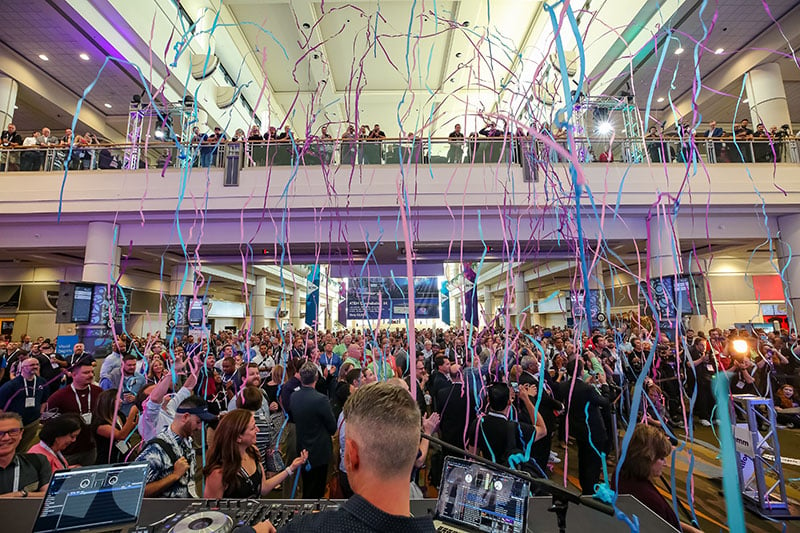Solving New Access Control Challenges With Digital Signage
Brick and mortar businesses are reopening. To do so safely — even legally — businesses are pivoting their customers’ experiences to encourage social distancing.
The Not So New Normal
Invidis Managing Director Florian Rotberg and Partner Stefan Schieker share how European businesses already are using technology to improve the safety of employees and customers. By using:
- Repurposed or newly installed digital signage, stores are informing patrons of occupancy limits, sanitation schedules, and public safety requirements.
- Already installed cameras and PA systems, store employees are monitoring and enforcing mask usage and social distancing.
- Sensors and speakers, businesses are metering occupants and grabbing the attention of any patrons who do not notice digital signs.
According to an Invidis survey, about 50% of retailers in Europe would incorporate technology into their post-COVID-19 stores. In this ripe market, here are a few things AV professionals must keep in mind.
Budget & Business Size
Many businesses have experienced unexpected holds on revenue. They need solutions that will give a high return on investment (ROI) without much upfront cost. Invidis compares the average, reoccurring cost of security personnel to the one-time cost of a versatile A-frame digital sign to show that the signs may give a better ROI.
A second consideration is business size. How many entry points does a store have? How frequently do customers arrive? Manually counting can become tedious, if not impossible, for employees. Invidis found that major retailers (e.g., supermarkets, fast fashion stores) are more likely to want a fully integrated digital metering system.
Watch the full webinar to hear Invidis describe five tiers of metering systems according to budget and business size.
The Customer Experience
A successful reopening is about much more than head counts and cleaning routines. It is about human psychology and customer confidence.
Time is tight. These pivots are essential. AV professionals must pay attention to what their clients really need and want. Afterall, business owners know best how to put their own customers at ease.
Here are some creative ways retailers might want to use technology to build customer trust:
- Use digital signs to post branded and personalized welcome messages.
- Create outdoor displays that announce the store’s cleaning schedule and current occupancy.
- Link occupancy monitors and cleaning schedules to a store’s live online feed.
- Use an infrared sensor to screen entering customers for fevers.
RELATED: InfoComm 2020 Connected | Dynamic Concepts for Data Driven Digital Signage
If ERP, CRM, or sensor data is collected on site, customers increasingly require sophisticated data driven digital signage.
A business may desire technologies that blend in seamlessly and preserve a degree of normalcy. Others may want displays that stand out to highlight the business’ adaptivity and increase customers’ sense of safety. Retailers may want a temporary solution or something permanent that can be repurposed later.
Whatever a business may choose, the entire panel agrees that an AV professional must ensure that all new technologies fully integrate with systems already in place.
Mission Mindset
Beth Warren, SVP Marketing and Retail Practice for Creative Realities, notes that prior to COVID-19, retailers purposely created environments where customers would wander. Now, retailers must accommodate occupancy limits and the new mission-mindset. Post-COVID-19 stores are about efficiency and, more than ever, trust.
In uncertain times, communication is the backbone of trust. Digital signs allow for real-time talk without today’s face-to-face risks. They are a technological tool that can help retailers not just reopen their doors, but truly reopen for business.
Watch the full webinar now: Digital Signage Power Hour – Solving New Access Control Challenges





.jpg?sfvrsn=3d19e700_3)
